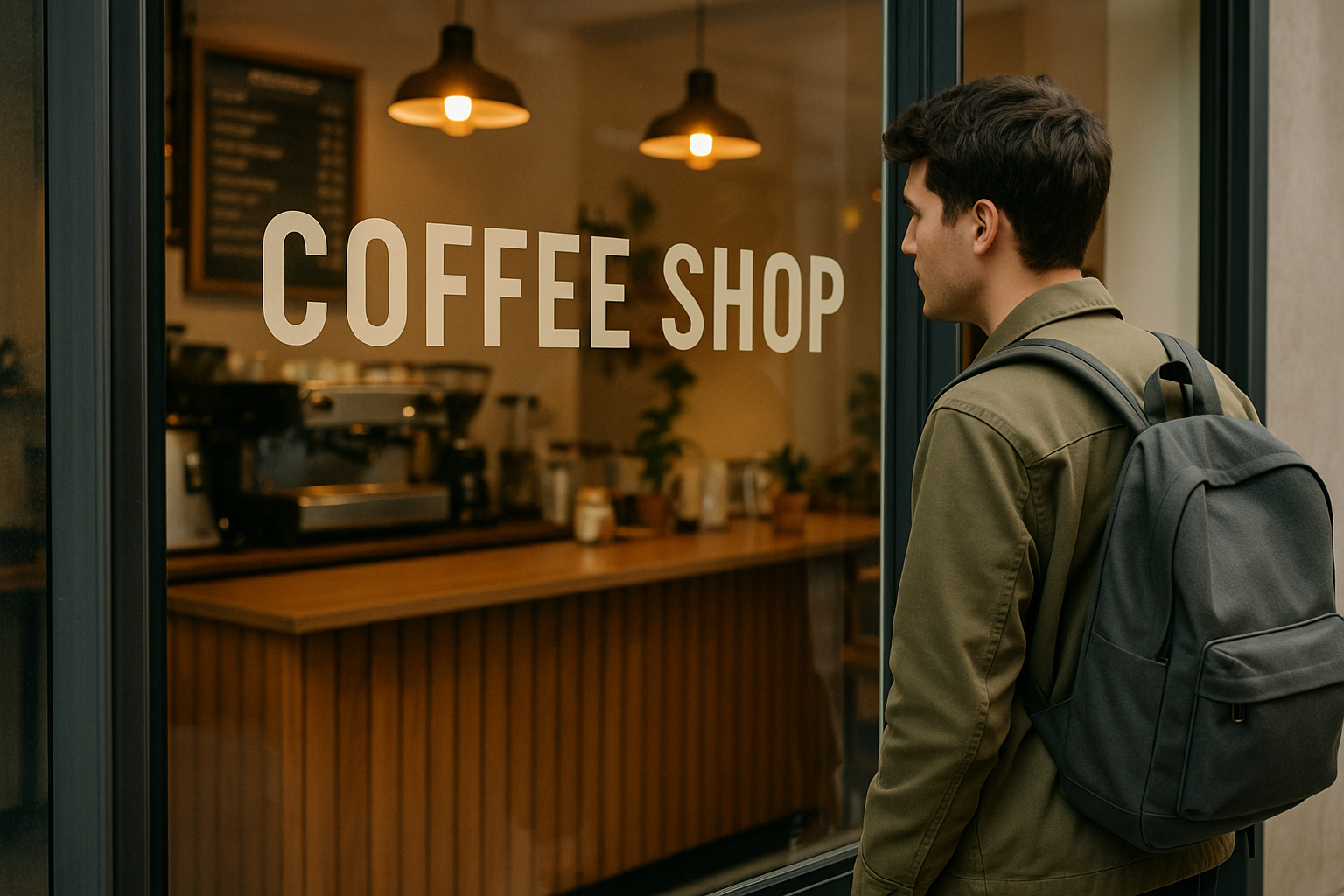You’re ready to become a barista — or maybe you’re looking to move to a new café. Either way, one of the most important decisions you’ll make is where you choose to work.
At first, all coffee shops might seem the same. They serve espresso, have nice playlists, and post latte art on Instagram.
But behind the counter, every café is a different world — and where you choose to work can either support your growth… or drain your energy.
In this article, we’ll break down exactly what you should look for in a coffee shop before you apply, so you can choose a place where you’ll thrive, not just survive.
Why the Right Fit Matters More Than You Think
As a barista, your workplace becomes your second home. You’ll spend hours standing, talking, learning, moving — often under pressure.
A good fit means:
- You enjoy the vibe and team
- You’re respected and supported
- You’re learning and growing
- You feel safe and energized at work
A bad fit means:
- Constant stress and miscommunication
- Feeling undervalued or overworked
- Burnout or even quitting the industry
That’s why taking the time to choose wisely before you apply is essential — especially if you’re serious about building a future in coffee.
Step One: Visit the Café Like a Customer
Before applying anywhere, visit the café as a regular guest. Order something, sit down, observe everything. You’ll learn more in one visit than from a job posting.
What to observe:
- How the team communicates
- How clean and organized the bar is
- The attitude and energy of the baristas
- The overall customer vibe (calm? rushed? chaotic?)
- How long customers wait and how they’re treated
You’re not just watching the coffee — you’re watching the culture.
1. Team Dynamic: Do They Work Like a Unit?
The way the team moves together says a lot. A good café team operates like a dance: smooth, communicative, respectful.
Positive signs:
- Baristas help each other without needing to ask
- There’s clear communication — not yelling or confusion
- They look calm, even when it’s busy
- You see real teamwork, not just “everyone doing their own thing”
When the team is in sync, it means they’ve been trained well — and you’ll be entering a healthy environment.
2. Cleanliness: Is the Café Well-Maintained?
Cleanliness is non-negotiable. A messy café means bad management, lack of standards, and possible health code issues — none of which you want to deal with.
Look for:
- Clean counters, floors, and bathrooms
- No piles of dirty dishes in the open
- Milk pitchers and steam wands cleaned regularly
- Organized workstations, not cluttered chaos
- Baristas wiping and cleaning as they work
If the café doesn’t respect hygiene, it probably won’t respect its team either.
3. Equipment: Are They Using Quality Tools?
The tools you work with directly impact your learning, safety, and performance. You want to work somewhere that invests in good equipment — and takes care of it.
Pay attention to:
- The espresso machine: Is it well-known and in good condition?
- The grinder: Is it dialed in and clean, or dirty and loud?
- Other tools: scale, tamper, pitchers — are they accessible and well-maintained?
High-end gear isn’t always necessary, but clean, maintained, working gear is a must.
4. Menu: Is It Balanced and Clear?
A well-designed menu shows that the café understands its identity and customers. A chaotic, overly complicated, or unclear menu is usually a red flag.
Green flags:
- A focused menu with signature drinks or seasonal options
- Clear labeling of sizes, milk alternatives, and allergens
- Signs of intentional curation (e.g., single-origin beans, house syrups)
Red flags:
- Pages of random options
- Confusing pricing or poor labeling
- No clear drink standards or customization process
A smart menu makes your job easier — and your service better.
5. Staff Attitude: Do They Seem Miserable or Motivated?
How the baristas act — especially when they don’t know you’re observing — tells you everything.
Positive energy:
- They smile, greet customers, and talk kindly to each other
- They look focused but not rushed
- They seem to enjoy the space and the work
Warning signs:
- Eye-rolling, heavy sighs, visible tension
- Complaining in front of customers
- Baristas who look checked out or burnt out
If the staff doesn’t seem happy, that’s a management problem — and it could become your problem too.
6. Customer Flow: Is It Manageable or Chaotic?
Some cafés are beautifully designed — until a rush hits and everything falls apart. You want to work in a space where the flow works.
Look for:
- Efficient order-to-bar-to-pickup layout
- Smooth transitions between drinks
- Clearly assigned roles (cashier, bar, runner, etc.)
- A bar that doesn’t get backed up or crowded easily
If it looks like chaos from the outside, imagine working it from the inside.
7. Vibe and Values: Does It Align With Yours?
Every café has a vibe — chill and cozy, high-volume hustle, community-focused, trend-driven, etc. You should apply where you feel like you belong.
Ask yourself:
- Do I feel comfortable in this space?
- Could I imagine spending 8 hours here?
- Do the values of this café match what I care about?
- Do they promote sustainability, inclusivity, or community?
When your values align with the café’s, you’ll be more motivated and proud to represent them.
8. Opportunities to Learn and Grow
Some cafés are training grounds. Others are just job factories. If your goal is to improve as a barista, look for signs of a place that supports learning.
Ask or observe:
- Do they offer training or ongoing education?
- Are baristas pulling consistent shots or just pressing buttons?
- Do they brew manually (pour-over, Chemex, etc.) or only espresso?
- Does the café talk about origins, roast profiles, or sustainability?
If they care about the craft, you’ll get better just by showing up every day.
9. Reputation Among Baristas
Want to know what a café is really like? Ask a barista who doesn’t work there.
The barista community is small and connected. People talk. If a shop treats its team well, word spreads. If not, word spreads faster.
What to ask:
- “Hey, have you heard anything about [café name]?”
- “Do you know anyone who’s worked there?”
- “Would you recommend applying there?”
You’ll often learn more from one honest conversation than from reading 50 reviews online.
10. Red Flags That Say: Don’t Apply Here
Even if the drinks are good and the place looks cool, be careful of cafés that show these signs:
- High staff turnover — different faces every month
- No clear roles or training — you’re just thrown into chaos
- Disrespectful management — yelling, ignoring, or gaslighting
- Lack of systems — no checklists, no consistency, no accountability
- Pay secrecy or underpayment — vague about wages or no tipping system
If it looks like a mess now, it’ll be even worse once you’re on payroll.
Final Thoughts: Don’t Just Apply — Choose
Too many new baristas apply to the first café that will hire them. But the truth is, you have more power than you think.
You’re offering your time, your energy, your creativity — not just filling a spot. So choose a workplace that respects and earns your commitment.
Before applying, ask yourself:
- Will I grow here?
- Will I be treated fairly?
- Will I enjoy the environment most days?
- Will I be proud to represent this brand?
If the answer is yes, hit send on that application.
If the answer is no, keep looking. The right café is out there.

Marcelo Rodrigues is a passionate barista with over 7 years of experience in specialty coffee. He’s worked in top cafés, led barista training sessions, and now shares practical tips to help beginners and coffee lovers improve their skills. Through this blog, Marcel makes the world of coffee more accessible—one cup at a time.

